Island hopping tours often received phone calls from concerned travelers regarding the Jellyfish Season.
Most local people choose not to swim on our local beaches during the Jellyfish season. All hotels and resorts have a swimming pool so there is no need to worry about where you can cool down.
What are jellyfish?
Lacking brains, blood, or even hearts, jellyfish are pretty simple critters. They are composed of three layers: an outer layer, called the epidermis; a middle layer made of a thick, elastic, jelly-like substance called mesoglea; and an inner layer, called the gastrodermis.
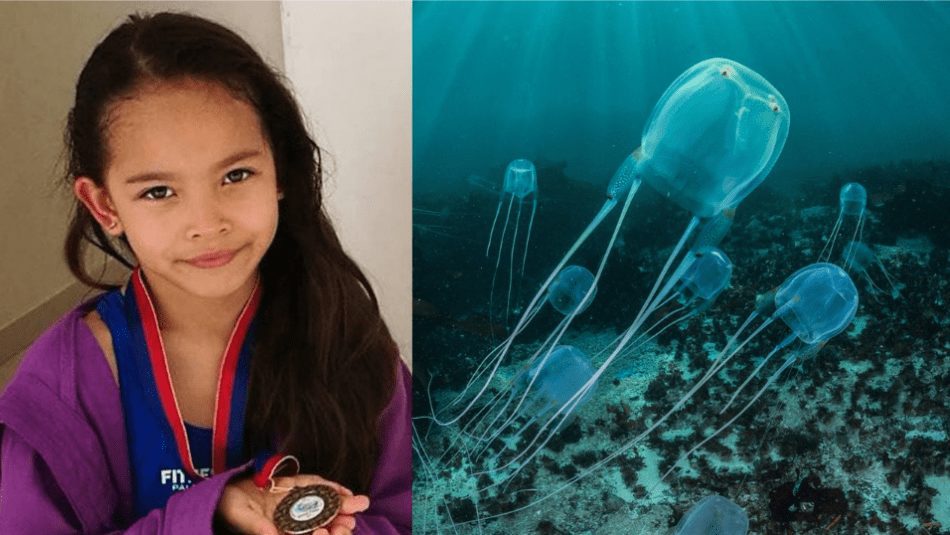
Not all jellyfish have lethal toxins like box jelly, but proper care is nonetheless important. Growing up in the Philippines, I wasn’t aware of how dangerous jellyfish are. Until I got stung. I panicked, yes. I feel scared but did you know what family and relatives did? They just called a 4-5-year-old kid and told her to urinate in my leg where I got stung. Ewww!! Yeah, it’s disgusting but amazingly, after a couple of minutes, the discomfort and pain slowly fade away. I don’t recommend that. Why? That’s the old wife’s tale, but it doesn’t work for all jellyfish and it’s very embarrassing. And if you’ve been stung by a Portuguese man O’war it’s the worst thing you can do. It makes the pain ten times worse.
ALSO READ: 21 Philippines Tourist Spots that Look Like Foreign Destinations
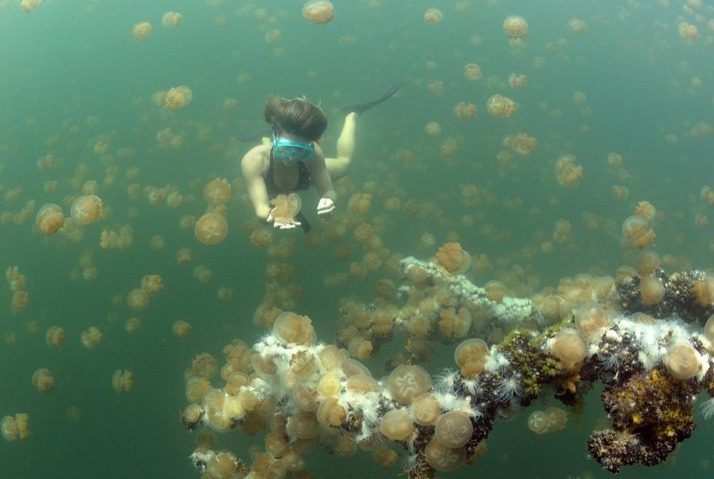
Now, I’m living here in Australia where there are more dangerous jellyfish around. But hey, I know how what to do if I get stung with jellyfish again. Knock in the wood. I don’t want to experience that again. So anyway, here some common questions about jellyfish season and what to do if you get stung by it..
Will have to admit that it was slightly awkward whenever you felt a jellyfish against your hand or arm? Most jellyfish are harmless however certain varieties may cause a serious reaction. Incidents involving serious marine stings are becoming more common during the Jellyfish Season. It is important to follow the below precautions to avoid being stung. Because some jellyfish have a sting powerful enough to kill fish and occasionally even humans.
Precautions to Avoid during Jellyfish Season
When is jellyfish season in the Philippines?
Usually, April and May, when the Habagat ends. However, our recent climate patterns mean many such generalizations don’t apply as well
How many species of jellyfish do we have in the Philippines? What are the most common ones?
The most common ones are Aurelia or moon jelly and relatives of the genus Mastigias Papua.
The particular species Aurelia aurita is often called “moon jelly,” after its milky, translucent color and shape. Moon Jellyfish stings and that hurts. Moon jellyfish stings are not fatal to humans. Infarct, their mild venom is not enough to seriously injure a full-grown human being.
ALSO READ: WARNING! 10 Tagalog Words That Can Get You In Trouble
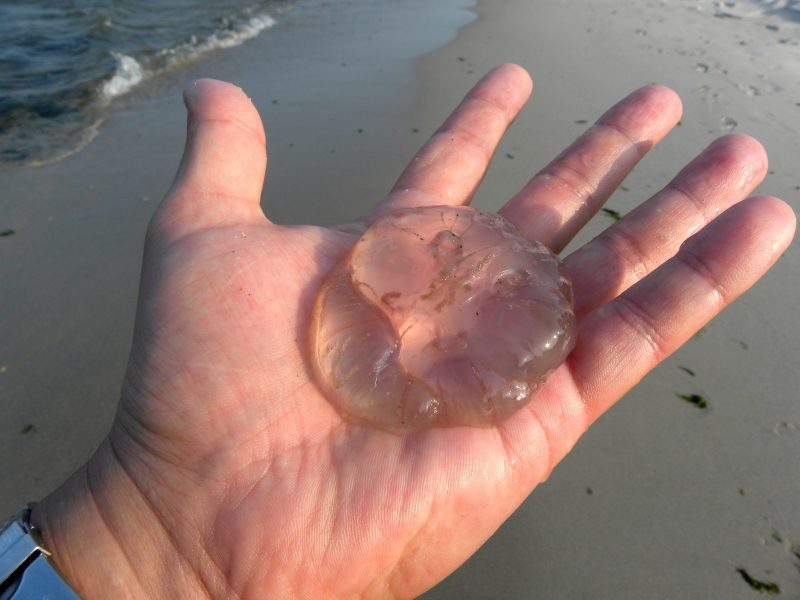
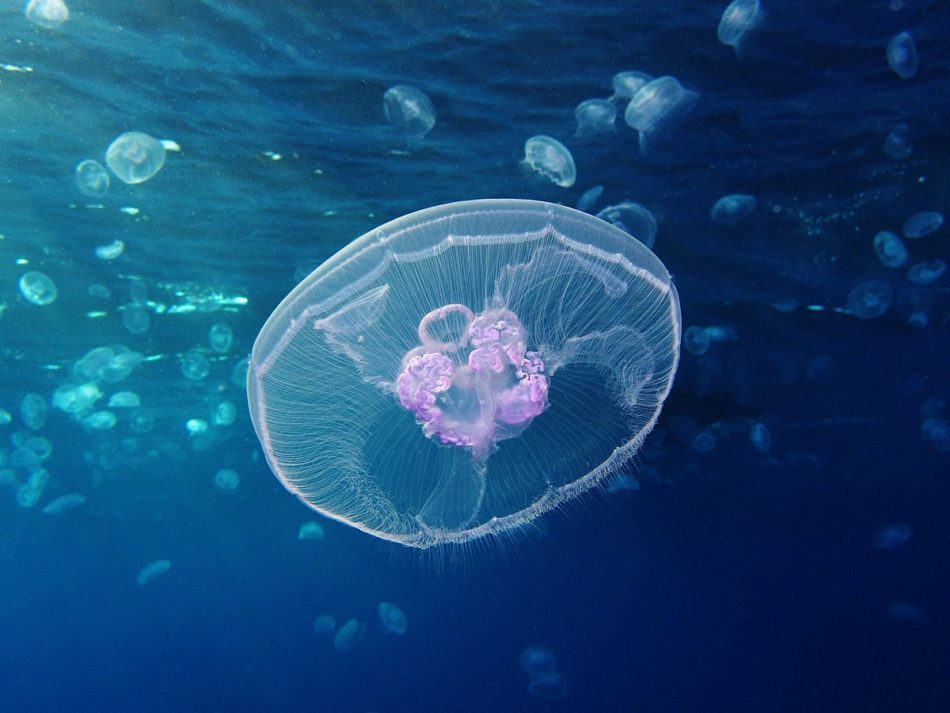
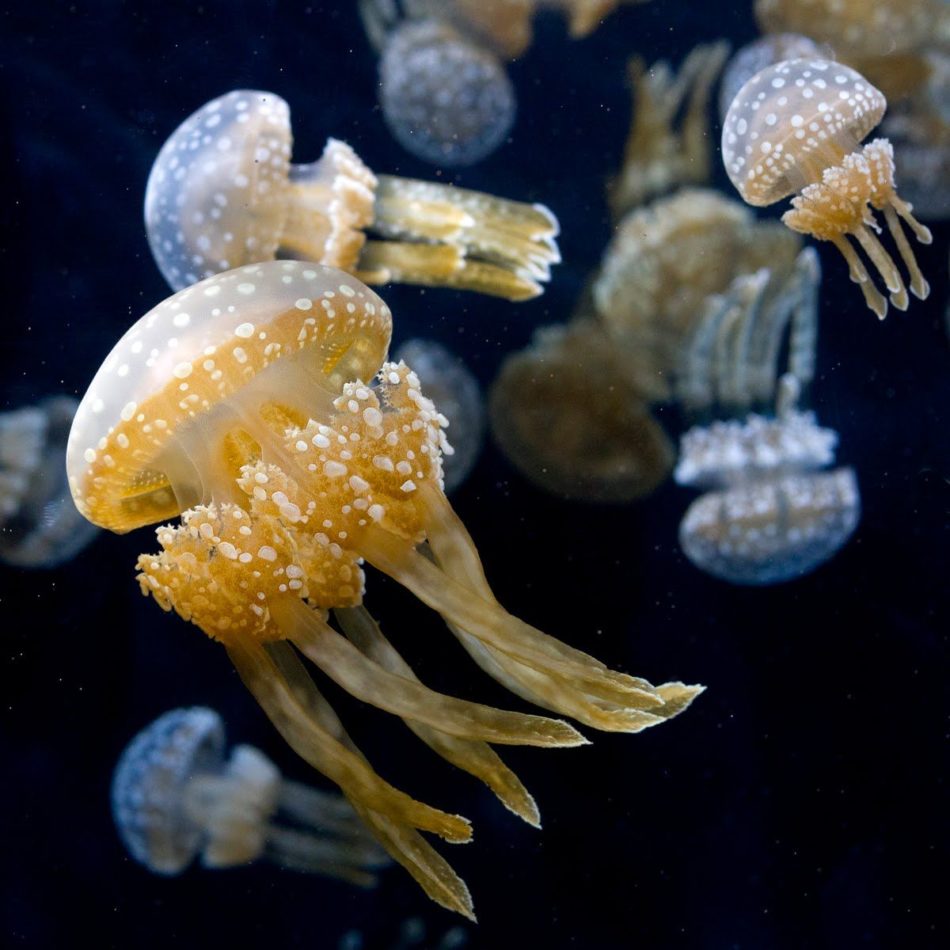
Are there coasts in the Philippines where stinging jellies are more common?
The first recorded human deaths in the medical literature are in Suall Pangasinan. But jellyfishes are found virtually anywhere. In fact, Aurelia is referred to as “cosmopolitan” in distribution, meaning it is found worldwide, even in cold places like Norway. This is the same jellyfish that caused a Luzon-wide blackout on December 10, 1999.
Investigations revealed that the Luzon-wide outage was caused by jellyfish. More than 50 truckloads of jellyfish swam near and were sucked into the Sual Power Plant’s cooling system, forcing them to shut down. The power imbalance in the Luzon grid prompted a series of shutdowns that eventually affected the entire Luzon.

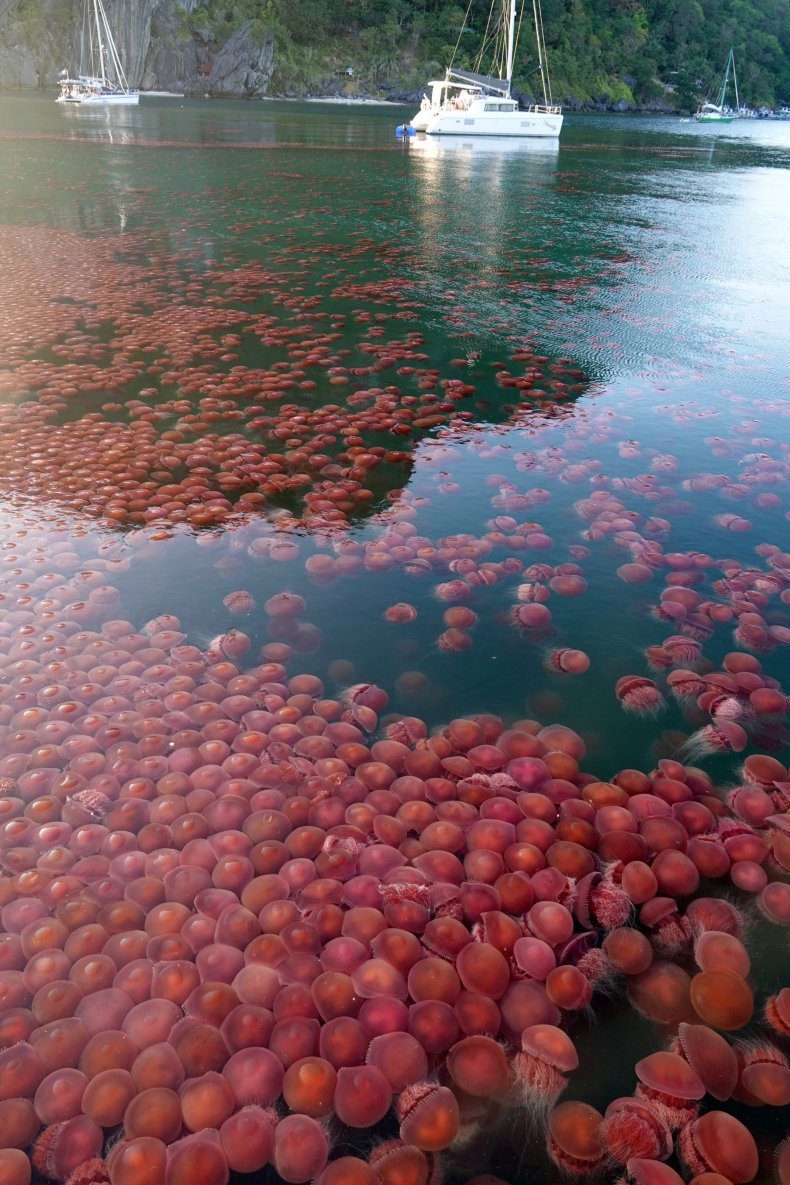
Giant blooms of pink jellyfish have been reported in Palawan, Philippines, as beaches are left deserted during the coronavirus pandemic. Not a jellyfish season yet but it might just be with the situation in the Philippines, that the current bloom is more noticeable because the tourists aren’t there to disturb the jellies and so they are rising all the way to the surface of the water and in the presence of tourists they may stay closer to the bottom of the sea, or move further offshore.
These activities can possibly alter water circulation and distribution of zooplankton food for the jellyfish, thereby potentially changing the distribution of jellyfish medusae.”
The absence of field data and formal scientific reports on the behavior and distribution of the jellyfish species makes it difficult to even speculate about whether the presence of tourists and fishers in the area affects the jellyfish.
ALSO READ: Aurora Australis aka Southern Lights: Witness the Magic this Winter
How do jellyfish end up on the beach?
Jellyfish go with the flow. They float with the current, which means that if the current comes to shore, jellyfish may come too. Stormy weather and strong winds can also bring jellyfish to shore, and they can end up on the beach. Because they contain so much water, Jellyfish die quite fast after they wash up on a beach.
How does a jellyfish sting?
Jellyfish don’t generally intend to sting humans. They mostly use their stinging tentacles to catch and eat their dinner. Still, jellyfish do sting people from time to time, usually by brushing against swimmers, surfers, or other water recreation enthusiasts. It’s also possible to be stung by a dead jellyfish that has washed up on the shore, so always watch your step on the beach.
Jellyfish stings are painful, but in most cases, they are mild and are not too serious.
Normally, they will cause red marks, tingling, itching, or numbness. Jellyfish stings cause more harm in people with weak immune systems, elderly people, and children.
Only some jellyfish stings, such as those from Box Jellyfish (the most deadly), Lion’s Mane Jellyfish, and Sea Nettle, can be very serious. The more dangerous jellyfish species live in Australia, the Philippines, the Indian Ocean, and the central Pacific Ocean. Portuguese Man-of-War is not technically jellyfish. They are actually colonial organisms made up of polyps. Nevertheless, they can deliver painful stings.
ALSO READ: 10 of the Strangest Places in the World
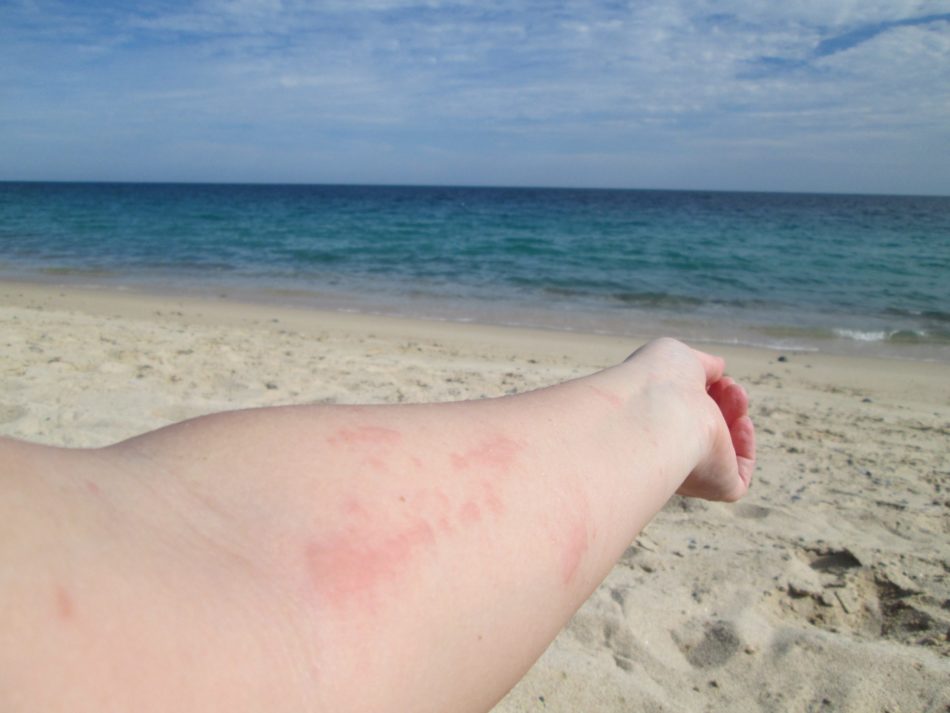
You may have heard the myth that applying urine to a jellyfish sting is able to counteract the venom, but there is no scientific basis for this “remedy” and it can sometimes actually make the sting hurt more, or make the venom more powerful. Here’s what to do if you’re stung by a jellyfish:
1. Rinse the sting with seawater or create a paste of baking soda and seawater to get rid of the tentacles. If you’re able to, bathe the area in heated tap water or take a warm shower.
2. Remove any leftover tentacles with a dry towel. If the tentacles are difficult to remove, try coating them with shaving cream, then shaving them off with a razor or credit card. Protect your hands with gloves if possible.
3. Protect the site of the sting. Avoid pressure and contact with sand.
4. Taking pain relievers like ibuprofen or applying antihistamines or steroid creams (like cortisone) can lessen the pain, itching, and swelling. In Australia, most lifeguard teams are equipped with morphine and antivenoms to treat the nastier stings from down under.
ALSO READ: Aurora Australis aka Southern Lights: Witness the Magic this Winter
What can you do if you get stung by a jellyfish?
In the Philippines, some researchers discovered that vinegar may cause more harm than good in cases of box jellyfish stings, but it’s still the recommended general first aid for jelly stings in the US and Australia.
A weak acid like vinegar is good because it neutralizes the stinging cells that can drift around or stay on the skin and still cause trouble. Ammonia, freshwater, and urine are not advisable. One must observe a victim closely, though, because some reactions may be delayed.
Note: Never use fresh water, pee, or alcohol in cleaning the affected area. Using freshwater, pee, or alcohol will trigger the stingers. If ever you can, take note of the type of jellyfish that stung you, or at least describe how it looked, it can help your doctor to know what to do for you in case it’s getting worse.
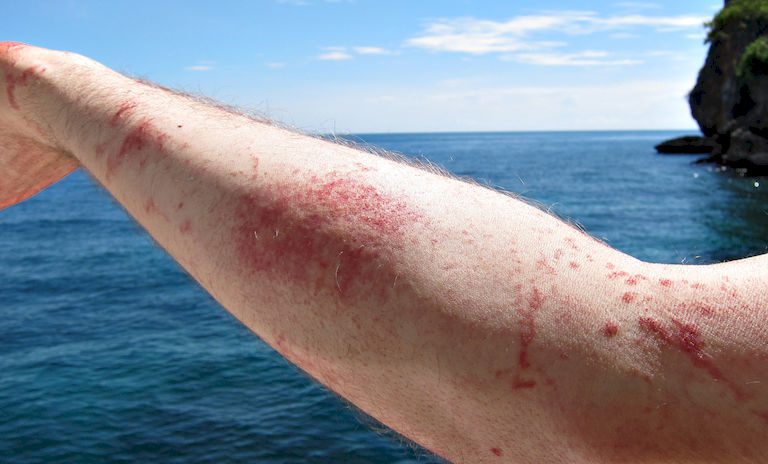
Only a small number of jellyfish will actually end up coming into contact with swimmers, and many of them do not give serious stings.
They’re definitely no reason to fear the water! There are even a number of jellyfish that sting very mildly or do not sting at all, such as Pleurobrachia Bachei (more commonly known as sea gooseberries), or Aurelia Aurita (also called the moon jelly).
In fact, swimming with jellyfish is a popular tourist activity in some places. In the famous Lake Palau in the Philippines, you can swim with Golden jellyfish and Moon jellyfish. Be cautious during jellyfish season but hey, swimming with jellyfish just may give you a new perspective on these beautiful and fascinating creatures.
Stingless Jellyfish
The Philippines is home to the stingless jellyfish in Sohoton, Bucas Grande of Surigao del Norte. The harmless jellyfish is occupying an entire lagoon.
The harmless jellyfishes are actually the moon jellyfish and the golden jellyfish. These species of jellyfish are unique because their stingers are so mild that it is harmless to human beings. This is why people want to experience swimming with them.
The government highly protects this national treasure. To swim with stingless jellyfish, you must go through the standard briefing, of the local government in charge, to learn how to protect those jellyfish. But the time spent during the briefing makes it even more special to swim with it.
Initial Findings Suggest Box Jellyfish Encounters along Shallow Philippine Coastlines are Predictable
Jellyfish stings account for numerous deaths in the Philippines. Despite this, there is little scientific information on the identity, distribution, seasonality, and ecology of the box jellyfish species involved. We present initial findings of three months (April–June 2021) of monitoring the abundance of and envenomations by box jellyfishes in eastern and western Luzon. Emergent patterns suggest encounters between box jellyfish and people are more likely to occur in beach areas within a few kilometers of rivers when tidal ranges are large, particularly around the flood phase of high tide. Encounters are also more likely on coasts where the monsoon winds blow onshore during the warmer months, bringing these animals closer to beach areas. They then stay longer in the shallows when the seas are calm. Beachgoers are, thus, advised to plan their destinations and activities carefully and wear protective clothing when venturing into shallow coastal areas. (Click here to read more)

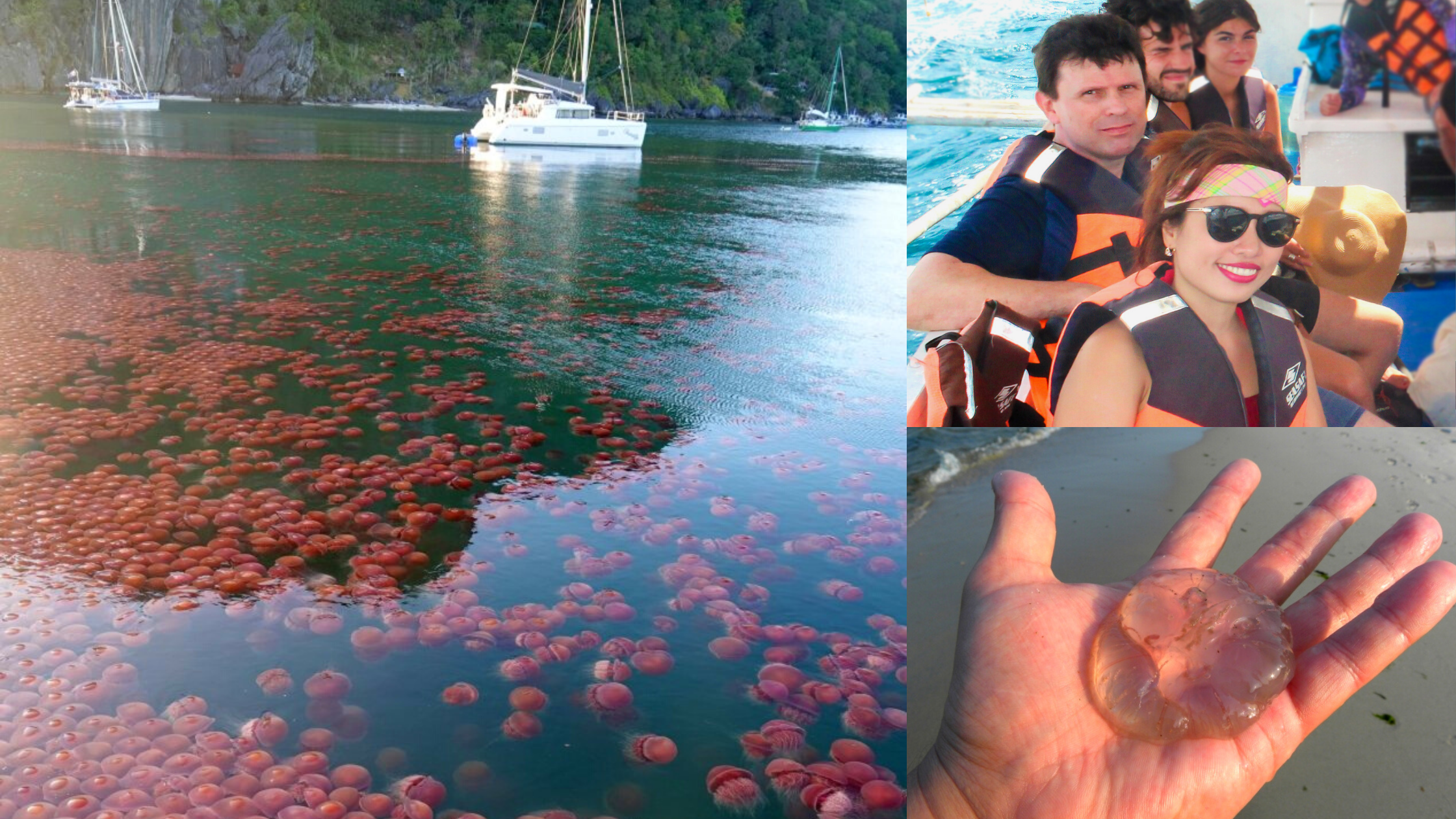










Reviewed by 1 user
on line pharmacy
Thank you for any other great article. Where else may anyone get that kind of info in such a perfect way of writing? I have a presentation next week, and I’m at the look for such information.
Please let me know if you’re looking for a article author for your site. You have some really good articles and I feel I would be a good asset. If you ever want to take some of the load off, I’d absolutely love to write some articles for your blog in exchange for a link back to mine. Please shoot me an email if interested. Kudos!
Заправка,диагностика любых авто-кондиционеров на самом современном оборудовании в Абакане
Уровень как у дилера!! База на все автомобили,
все по граммам,сколько нужно-столько и заправим согласно заводскому регламенту на автомобиль!!
Так же МОЖЕМ ВЫКАЧАТЬ ВАШ ФРИОН С АВТОМОБИЛЯ НА ВРЕМЯ РЕМОНТА ПОТОМ ЗАПРАВИТЬ ЕГО ОБРАТНО!!! ВАМ НЕ НУЖНО БУДЕТ ЗА НЕГО ПЛАТИТЬ!!
Вы платите ровно столько,сколько заправляем в авто и не больше!!
Господа!! У нас кондиционеры в авто заправляет не простой заправщик, а автоэлектрик с опытом более 8 лет работы по электрооборудованию автомобилей, потому не просто заправил и все, он проверяет всю систему и дается гарантия на услугу, выписывается чек, заказ-наряд
https://vk.com/zapravka_avtokondicionerov_car
г.Абакан ул.Вяткина 18 территория рембыттехники бокс 1 тел 8(3902) 320-456 тел 8-923-595-1234
[url=https://radikal.host/i/dxwagP][img]https://e.radikal.host/2024/04/04/oEZsrTwQcv4.md.jpg[/img][/url]
Every weekend i used to pay a quick visit this web site, because i want enjoyment, since this this site conations in fact fastidious funny data too.
This is excellence personified! This information is a perfect match for my needs.https://brainboost.blog/
Компания Specialized — один из ключевых производителей велосипедов и инвентаря
https://katay.com.ua/ru/velosypedy-specialized/
Jump to search
Speculate on market Forex?
Best exclusive offer 2024 for common speculators, software developers, traders, trading signal sellers, trading advisor sellers, trading account managers, investment companies, large brokerage firms , as well as for everyone who dreams of opening their own business on the Forex market with minimal investments.
We will be happy to Give away MetaTrader4 Server for 0Give away MetaTrader4 Server for 0/en/products.html
More in detail watch here:
https://drive.google.com/file/d/14xuST2EFDKcnfUT_dL49jQu0Asj1uJx4/view?usp=sharing
https://www.ibm.com
I loved as much as you will receive carried out right here. The sketch is tasteful, your authored subject matter stylish. nonetheless, you command get got an shakiness over that you wish be delivering the following. unwell unquestionably come further formerly again since exactly the same nearly a lot often inside case you shield this hike.
My website: лижет киску видео
Hello there, I found your web site by means of Google while looking for a comparable topic, your site got here up, it seems great. I’ve bookmarked it in my google bookmarks.
Hi there, just become aware of your blog through Google, and located that it’s really informative. I’m gonna be careful for brussels. I will appreciate if you continue this in future. Lots of other folks might be benefited out of your writing. Cheers!
I enjoyed your viewpoint. Here’s another resource that offers additional information on this subject
I’m not that much of a internet reader to be honest but your sites really nice, keep it up! I’ll go ahead and bookmark your site to come back in the future. Many thanks
you are in reality a good webmaster The website loading velocity is amazing It sort of feels that youre doing any distinctive trick Also The contents are masterwork you have done a fantastic job in this topic
Hey There. I found your blog using msn. This is a very well written article. I will make sure to bookmark it and return to read more of your useful info. Thanks for the post. I’ll certainly return.
Do you have a spam issue on this site; I also am a blogger, and I was curious about your situation; we have created some nice practices and we are looking to trade strategies with others, why not shoot me an email if interested.
These are actually wonderful ideas in on the topic of blogging. You have touched some fastidious points here. Any way keep up wrinting.
constantly i used to read smaller posts which also clear their motive, and that is also happening with this post which I am reading at this place.
It’s actually a great and helpful piece of info. I’m glad that you simply shared this helpful information with us. Please keep us up to date like this. Thank you for sharing.
I am actually grateful to the holder of this web page who has shared this great piece of writing at here.
Oh my goodness! Impressive article dude! Thanks, However I am experiencing issues with your RSS. I don’t know the reason why I can’t subscribe to it. Is there anybody else getting the same RSS issues? Anybody who knows the answer will you kindly respond? Thanks!!
Hi to every body, it’s my first go to see of this blog; this blog contains awesome and in fact fine information for readers.
On October 30, 2023, Port Barton, Palawan, a jellyfish stung a 4 y.o. girl. She was unconscious within a minute or two and unfortunately didn’t survive.
I was extremely pleased to find this website. I need to to thank you for your time for this wonderful read!! I definitely really liked every bit of it and i also have you book-marked to check out new stuff on your website.
Your point of view caught my eye and was very interesting. Thanks. I have a question for you.